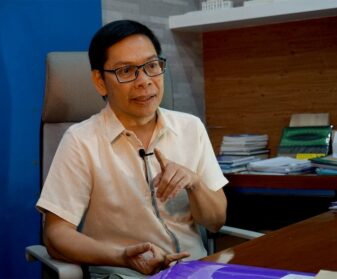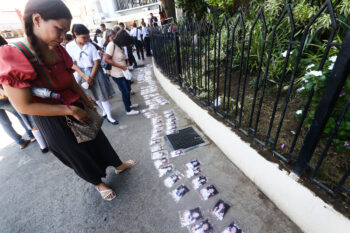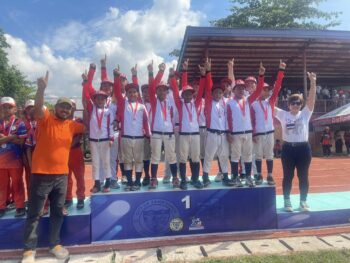
MINDAVIEWS
ANGAY-ANGAY LANG: The Minoritization of the Indigenous Communities of Mindanaw and Sulu (12)
12th of 16 parts
Rudy Buhay Rodil
(Done in 1992 at Iligan City, published initially as two versions. First as the abbreviated edition published by The Minority Rights Group, London entitled The Lumad and Moro of Mindanaw, July 1993. The Philippine edition carrying the full draft was printed by AFRIM in Davao City 1994. This was later updated in 2003, summarized in an epilogue. This is the third revision, now with an expanded Epilogue.)
Part XII
Chapter 5. Agus I Hydroelectric Plant; What Price Electricity?
Energy crisis in Mindanaw! Thus screamed newspaper headlines from late 1991 to the early part of 1992. The National Power Corporation (NPC or NAPOCOR), which supplies almost the entire energy requirement of Mindanaw, had cut its power output by 50% resulting in brownouts lasting for as long as eight to twelve hours. Almost immediately, there were howls of NAPOCOR mismanagement and a call for heads to roll. For their part, NAPOCOR officials explained that they could not help it.
The water level of Lake Lanao had gone down to a dangerous level and could not sustain full operation of the five hydroelectric plants dependent on it. More than 90% of the electricity being used in the region comes from the five hydroelectric plants strung out along the length of Agus River. Agus flows from Lake Lanao in Lanao del Sur down to Iligan in Lanao del Norte. The situation has improved a bit three months later when curtailment was brought down to 35% or about three to four hours. But there is no promise of brighter days.
Immediate consequences have been insignificant to some but very grave to others. Among the latter are the factories in the industrial City of Iligan which have been forced to operate at only partial capacity, some to as much as half capacity. There is no telling yet how many billions of pesos in losses this will amount to for all concerned: the companies, the workers and their families, the national economy, and so on.
Much of the blame is being attributed to NAPOCOR officials’ mismanagement. In response, they say that the only short-term solution they can think of is to operate Agus I hydroelectric plant in Marawi City which has long been completed. Its 80-megawatt capacity will cut down the current 35% power curtailment to 20%. But an organized group of Maranaos, led by Save Lanao Lake Movement (SALLAM), vehemently opposed this for religious, cultural, economic and environmental reasons.
The long-term solution will require coordinated reforestation and the banning of logging within the watershed area around Lanao Lake from which the hydroelectric plants take their water. Power curtailment, they stress, is the direct consequence of the lowering of the water level of the lake which, in turn, is not only due to El Niño, the heat spell that has brought drought to the region for more than one year and four months, but is also the result of unmitigated logging operations within the lake watershed areas. The decision that will bring about this particular solution is not entirely in their hands. Several government agencies, both national, regional and local, are involved. Apparently irritated by this opposition and pressured by increasingly popular demand to get Agus I into operation, a highly placed government official of Lanao del Norte has even suggested imposing an economic embargo on Marawi City and the province of Lanao del Sur. Luckily, there were no takers. Never has the lack of electricity bothered so many people. It has also brought to the surface the complex chain of problems and events with which the Agus hydroelectric projects have become entangled. A quick review of the events is in order.
Energy Situation And Hydroelectric Power Projects
Three interrelated factors brought about the Philippine government’s feverish effort to tap all of the country’s energy resources: oil, water, geothermal, coal, alcohol, ipil, charcoal, etc. First, the country is 95 percent dependent on imported oil, mainly from the Middle East countries; second, the Arab-Israeli war in 1973 provided the occasion for the Arabs to discover that there is political power in oil: they refused to export oil to all countries that supported Israel and this included the Philippines. And third, the Moro National Liberation Front had succeeded in bringing the Bangsamoro case to the Organization of Islamic Conference (OIC) and the latter, in turn, granted the MNLF observer status in its roll of members. It was largely these three factors which forced the Philippine Government under President Ferdinand E. Marcos to negotiate with the MNLF under the auspices of the OIC.
And so, alongside with active researches into the energy potentials of water and geothermal resources, coal, alcohol, ipil, charcoal, and so on, were sustained explorations for oil in the Sulu and Palawan seas (both areas happen to be part of the ancestral homeland of the Bangsa Moro, according to the MNLF). Getting a large share of attention and funding were the water resources of the country. Very quickly, one after the other, the public came to know about the Chico River Dam Project in the Cordillera, the Agus River Project in Lanao del Sur and Lanao del Norte, and the Pulangi River Project in Bukidnon-Cotabato-Maguindanao provinces.
Altogether the government has identified 52 sites for hydro-energy development for a total estimated capacity of 8,380 megawatts: 30 in Luzon (5,374 MW) and 22 in Mindanaw (3,006 MW). Not included are the expected output from geothermal plants.
The biggest of these projects are those of Agus and the Pulangi. Together they can generate an estimated 1,947 megawatts, more than enough for the power needs of Mindanaw, said a Napocor official, for the next 75 years. Surplus power can then be channeled to Cebu, Negros, Panay and Bohol in the Visayas. There was no question that these will contribute significantly to the energy situation.
The Agus River project is composed of a series of seven hydroelectric power plants along the whole length of the Agus River, from its source in Marawi City to its mouth in Iligan City, and will generate a total of 944 megawatts.
The Pulangi hydroelectric-irrigation projects consist of six dams, the first four in Bukidnon and the last two in Cotabato. This complex will produce a total of 1,003 megawatts and service irrigations systems.
Other smaller projects which will have a combined capacity of 714 megawatts are located in northern and eastern Mindanaw. Tagoloan and Cagayan projects are in Misamis oriental; Bulanog Batang, Tago, Caracan, Daiwan, Lake Mainit and Sta. Josefa are in the provinces of Surigao and Agusan; Lanon river and Lake Seloton constitute the Lake Sebu project in South Cotabato.
(MindaViews is the opinion section of MindaNews. A peace specialist, Rudy Buhay Rodil is an active Mindanao historian and peace advocate.)
Tomorrow: Part XIII: Painful Complications Around the Agus Plants






